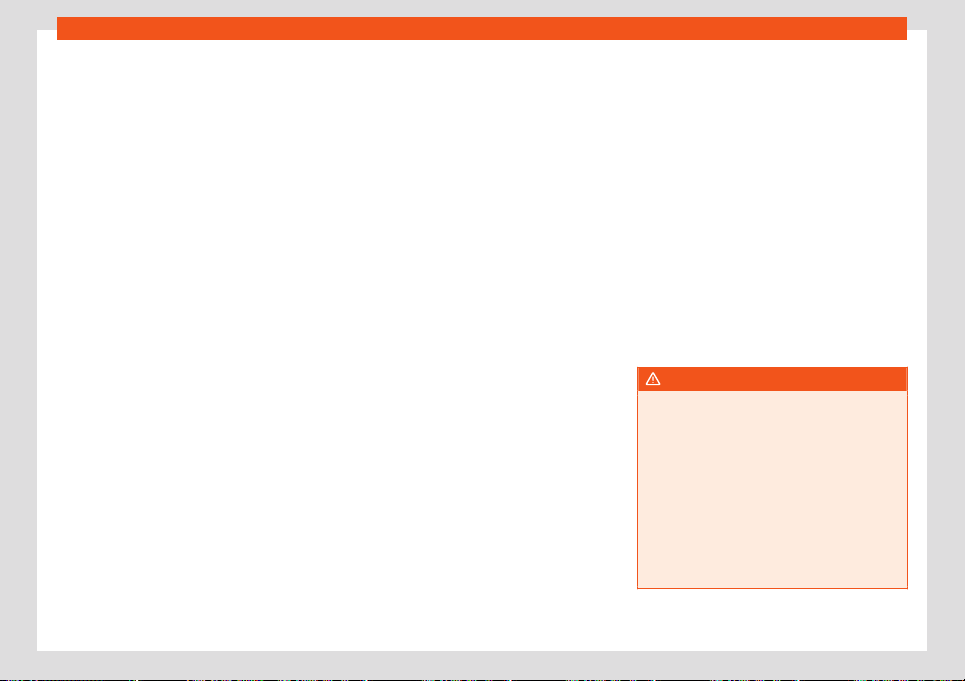Loading ...
Loading ...
Loading ...

Wheels
Low profile tyres
L
o
w pr
ofil
e t
yres have a wider tread, a larger
wheel diameter and a lower sidewall height.
Therefore, its driving behaviour is more agile.
Low profile tyres may deteriorate more quick-
ly than standard tyres, for instance due to
strong knocks, potholes, manhole covers and
kerbs. Correct tyre pressure is very important
›››
page 359.
To avoid damage to tyres and wheels, drive
with special care when driving on roads in
poor condition.
Visually check your wheels every 3000 km.
If the tyres or rims have received a heavy im-
pact or have been damaged, have a special-
ised workshop check whether or not it is nec-
essary to change the tyre.
Low profile tyres may deteriorate more quick-
ly than standard tyres.
Concealed damage
Damage to tyres and rims is often not readily
visible. If you notice unusual vibration or the
car pulling to one side, this may indicate
that one of the tyres is damaged. Reduce
speed immediately if there is any reason to
suspect that damage may have occurred. In-
spect the tyres for damage. If no external
damage is visible, drive slowly and carefully
to the nearest specialised workshop and
have the car inspected.
Foreign objects inserted in the tyre
●
Do not remove foreign bodies if they have
penetrated through the tyre wall!
●
If the vehicle comes with a tyre mobility
system, where necessary seal the damaged
tyre as shown in section
›››
page 38. Use a
specialised workshop for repair or replace-
ment. SEAT recommends visiting a SEAT
dealership for this.
The sealant at the lower part of the tyre tread
wraps around the foreign body and provision-
ally seals the tyre.
Tyres with directional tread pattern
An arrow on the tyre sidewall indicates the di-
rection of rotation on single drive tyres. Al-
ways note the direction of rotation indicated
when mounting the wheel. This makes sure
that optimal use is made of tyre properties in
terms of aquaplaning, grip, excessive noise
and wear.
Subsequent fitting of accessories
If you wish to change or fit wheels, rims or
wheel trims, we recommend that you consult
with a SEAT Official Service centre for advice
regarding current techniques.
Speed symbols
The speed rating indicates the maximum
speed permitted for the tyres.
max. 150 km/h (93 mph)
max. 160 km/h (99 mph)
max. 170 km/h (106 mph)
max. 180 km/h (112 mph)
max. 190 km/h (118 mph)
max. 200 km/h (124 mph)
max. 210 km/h (130 mph)
max. 240 km/h (149 mph)
max. 240 km/h (149 mph)
max. 270 km/h (168 mph)
max. 300 km/h (186 mph)
Some manufacturers use the letters “ZR” for
tyres with a maximum authorised speed
above 240 km/h (149 mph).
WARNING
●
New tyres do not have maximum grip dur
-
ing the first 500 km. Drive particularly
carefully to avoid possible accidents.
●
Never drive with damaged tyres. This
may cause an accident.
●
If you notice unusual vibrations or if the
vehicle pulls to one side when driving, stop
the vehicle immediately and check the
tyres.
●
Never use old tyres or those with an un-
known history of use.
P
Q
R
S
T
U
H
V
Z
W
Y
357
Loading ...
Loading ...
Loading ...